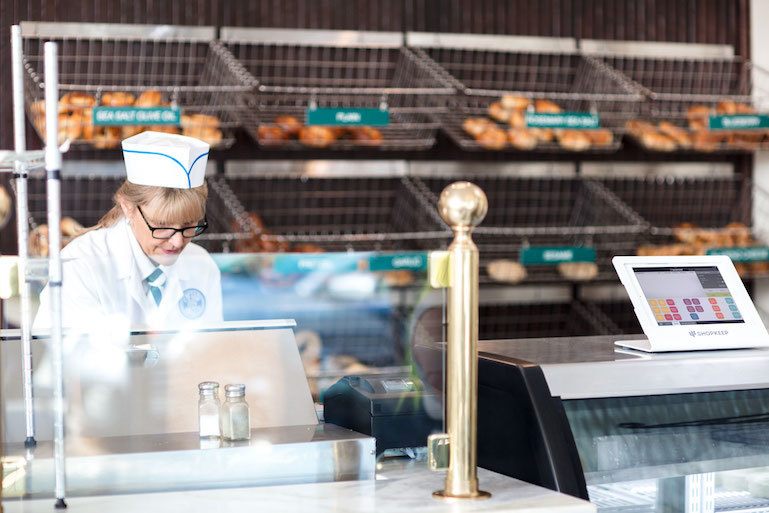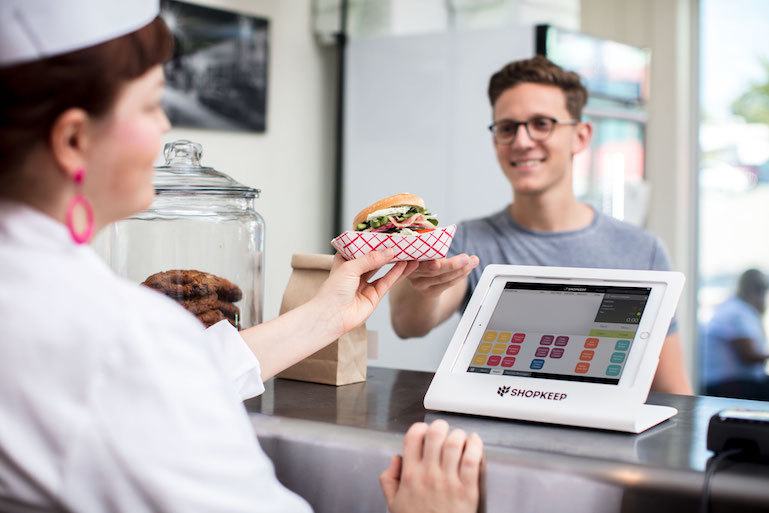
Restaurant Inventory Software (Your Secret Weapon)
It’s true for any business, but especially restaurants where razor-thin margins are the norm, you need to keep your costs under control. And the best way is with restaurant inventory software.
If you can’t, then your profitability will suffer, and in all likelihood, your restaurant will be out of business in short order. Luckily, this process, while not necessarily simple, is made much easier with the right tool: restaurant inventory software.
In this post, we’ll explain the capabilities of restaurant inventory software, what those capabilities can help you achieve, and even give you recommendations on the type of system that you should consider for your own business.
What’s Restaurant Inventory Software and Why Do You Need It?
The main objective of restaurant inventory software is to simplify inventory management for restaurants. In a restaurant, your inventory primarily consists of all of the food and other ingredients you use to create the dishes that you sell to your guests. However, some restaurant owners go so far as to track items like dishes, cleaning supplies, employee uniforms, and more.
Ultimately, it’s up to you to decide the number and type of items that you want to track. It might be a little obvious, but the more items you track, the more complicated inventory management becomes. The flip side of that is you’ll gain far deeper insight and control over the minutiae of your business than you will if you only choose to track a few ingredients.
Whether or not you choose to get inventory management software, you’ll still want to manage inventory in some capability. Without software, there are two choices, spreadsheet or pen, and paper. Spreadsheets are likely the better of the two tools to use on an ongoing basis, but neither is a great choice.
All of you basic inventory management functions will be done manually. Every time you get new inventory you’ll have to update your spreadsheets. The same is true for each dish you sell. If you’ve just opened your restaurant and aren’t doing much volume yet, or you have a very simple menu, this approach might be sustainable for a little while.
However, it’s likely that you’ll soon reach a point where you can’t keep up, or you’ll simply make a mistake. Maybe you’ll add new shipment data incorrectly, or you’ll allocate some of the day’s sales to the wrong dishes. Either way, your tracking won’t be accurate. The worst part is that you might not even realize until some later point.
You might be wondering why that’s such a big deal. It’s just a little bit of inaccurate data. Unfortunately, wrong data can have serious consequences. For example, receiving stock inaccurately can cause you to spend money items you don’t need, or not order what you do need because you have an inaccurate picture of your current inventory levels. Similarly, thinking that a dish is far more popular than it really is can affect everything from menu design to marketing campaigns and more.
To save yourself time, headaches, and get the accurate data you need to run a successful business, you’ll want to invest in inventory management software. Specifically, look for a system designed with restaurants in mind. With that said, let’s look at some of the key features and benefits you should account for when researching inventory management software.
SEE ALSO: What You Need to Know About Improving Restaurant Efficiency
Key Features and Benefits of Restaurant Inventory Management Software
When you start to research inventory management software it quickly becomes clear that there are dozens of systems out there. So as a time-strapped small business owner, how do you narrow down the playing field to find the tool that’s right for you? In general, we recommend focusing on a solution that makes it easy to get started, while still offering enough features that you won’t outgrow it anytime soon. Now, let’s take a look at those features.

Overall Ease of Use
We won’t mince words, inventory management processes and inventory management software can both get confusing quickly, especially if you aren’t naturally analytical. As a result, we recommend looking for inventory management software that’s as easy to use as possible. This ensures that you can get started without investing a ton of time. Plus, if the tool isn’t confusing, it’s likely that you’ll actually use it on a day to day basis.
Room to Grow
While simplicity is important, you also want to ensure that the software you buy gives you enough room to grow. No matter how easy a tool makes it, setting up your inventory management software is going to take some time. You want to ensure you get a return on that initial investment by not having to switch to a more powerful solution in short order.
We’ll touch on it in a little bit, but another key feature of inventory management software is reporting and analytics. As weeks and months pass, your tool is going to generate a significant amount of data that will help you run your business. It’s very difficult to transfer that data from one system to another when upgrading. So to make sure you get the most value from your inventory management software, you’ll want to choose a solution that you can use for at least several years.
Bulk Inventory Upload
If one thing’s true about running a restaurant, it’s that you’re regularly receiving new inventory. Compared to a retail shop, your inventory is far more “temporary.” You use it up when you sell dishes, and if you don’t, it spoils and you need to dispose of it. That means adding and updating inventory levels are far more of a day-to-day task. As a result, you’ll want your inventory management software to include bulk upload and update capabilities.
What does this mean exactly? Typically it means that you take a CSV template and add all of the details about your shipment to it. This typically includes data points like the product name, quantity received, UPC, department, and the supplier. From there you upload your spreadsheet to the system and your inventory will update with this new data. If your inventory management software doesn’t support bulk management, then you’ll need to update each product individually, which is a huge time suck.
SEE ALSO: Basic Inventory Management Techniques For Better Business
Reporting and Analytics
Another key feature you’ll want your software to include is comprehensive reporting and analytics capabilities. In fact, if a tool doesn’t offer these, we recommend skipping it entirely.
When comparing different systems’ reporting capabilities, you’ll want to look for a system that offers a balance of deep features with ease of use. Reporting can get complex quickly and the last thing you want is a tool that’s just plain difficult to understand. It’s likely you won’t use it if that’s the case. Ideally, you’re using a cloud-based platform so you have access to reports from any computer and possibly from your mobile device with a dedicated mobile app for reporting.
In terms of inventory management, you want reports that cover several broad capabilities: sales performance, stock levels (including raw goods), and profitability metrics. With sales reports, you’ll be able to quickly understand which of your dishes are most and least popular with your guests. This gives you insight into the ingredients you need to ensure are always on-hand. It also helps you identify what you can remove from your menu.
Stock reports are going to help you keep your finger on the current amount of inventory you have on-hand. Since things in a kitchen move quickly, it’s also recommended to supplement these reports with regular manual inventory counts. This helps you reconcile differences between the two systems, identify situations where excessive food waste is occurring, and even possibly detect inventory theft.
By using raw goods, you can track the individual ingredients that make up larger dishes, giving you deep insight into stock levels as well as how well your kitchen staff follows your portion control requirements. An example of this might be specifying all of the individual ingredients that make up a sandwich or other dish.
Lastly, profitability reports can help you understand two important aspects of your business. One is the overall value of your inventory. The data point is vital to track because it helps you understand cash flow. If you invest too much in inventory, then you may lack the cash on hand to run other areas of your business. Common examples include payroll, equipment repair expenses, and utility bills.
The other side of this coin is understanding your profit margins per dish. Restaurants are notorious for having slim margins. With the right reports, you can easily stay on top of this metric to ensure your business maintains profitability in the long term despite fluctuations in the market or in the form supplier pricing changes.
Integration with Other Tools
The best way to streamline your inventory management operations is to ensure that your inventory management software integrates with the other tools you use to run your restaurant. It’s most important that it integrates with your point of sale (POS) system. The reason for this is very straightforward. All of your transactions are run through your POS system. When that tool is integrated with your inventory management software, it can automatically update your stock levels based on each dish or drink sold. This is a huge time-saver.
Trying to keep track of this information manually is just asking for trouble. Not only do need to count on accurately tracking inventory levels and dishes sold each day, but you also need to invest at least a few hours manually updating your spreadsheets or whatever other systems you use for inventory management. At the end of a busy shift or killer week, even the most disciplined owner is going to let this task slide, causing problems down the line.
Standalone Inventory Management Software vs. a POS System
To elaborate on our last point, you do have two options when it comes to picking restaurant inventory management software: standalone or a modern POS system. The choice depends upon where you are in the life of your business, as well as the systems you already have in place.
Standalone inventory management software does little more than offer inventory management capabilities. However, since it specializes in this task, it often offers deeper functionality than a modern POS system. This functionality does come at the cost of expense and complexity. Often these standalone systems are used by very large restaurants that may have multiple locations and want to manage inventory across all of them from one central system.
Because it’s a specialized need, if you’re in the market for a tool like this, there’s a good chance you already know what you want. It’s also likely that you already have a point of sale system in place. As we mentioned above, you’ll want to ensure that any solution you do choose has a POS integration, which will help you automate inventory updates.
Most other restaurants, especially those that have yet to open or are relatively new, will benefit from choosing a modern restaurant POS system instead of standalone inventory management software. By going this route, not only do you get the bulk of the functionality offered by standalone software, but you also get all of the major benefits of a modern, cloud-based POS system.
This includes things like:
- Smooth Transactions – easily take even complex orders and accept all of the popular payment methods.
- Simplified Check Management – split and merge checks without hassle, and send orders directly to the kitchen for great efficiency and accuracy.
- Reliable Hardware – run your POS on modern technology like iPads and Android tablets versus an outdated cash register.
- Built-in Marketing – build your email list, offer customers a loyalty program, and grow sales with gift cards.
- Advanced Reporting – Get detailed insights about your business that go far beyond just inventory management.
- Rich Integrations – Connect your POS to your accounting platform, email marketing tools, and more to supercharge your productivity.
The above list is just scratching a surface of what a modern POS system can bring to a restaurant business. The best part is that most modern POS software vendors are continually adding new features and functionality that will help you run a more efficient and successful business.
At the end of the day, the solution you choose is up to you. However, it’s important to keep a few simple criteria in mind. You want restaurant inventory software that’s easy to use, powerful enough to grow with you, and interoperable with the other software you use to run your business. If you can do that, it’s hard to pick the wrong tool for you.
Want to try ShopKeep for yourself?
Just answer a few easy questions.
Need help finding the right point of sale?
Just complete the form. We’ll call you right back to explain how ShopKeep can work for you.
Hit the ground running.Sprinting, in fact!
Read our free, comprehensive guide, Small Business 101, to learn all you need to know about starting a thriving business.

